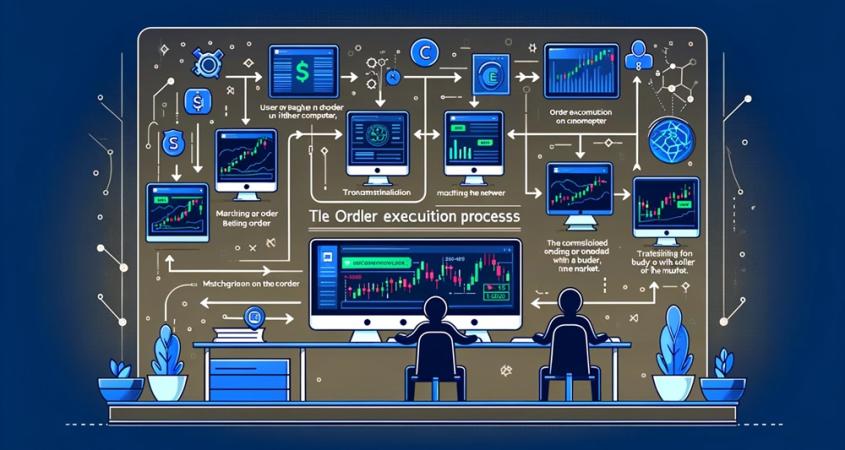Understanding Order Execution on Electronic Trading Platforms

Understanding Order Execution on Electronic Trading Platforms, Electronic trading platforms are vital gateways for investors looking to engage in global financial markets. Understanding the process of order execution is essential for traders. In this article, we will explore how investors can achieve their goals by understanding the order execution process on electronic trading platforms.
- Order Execution Process
- Balance Verification
- Order Execution During Peak Times
- Trade Settlement
- Receiving Confirmation
- Conclusion
Order Execution Process
When a trader decides to execute a trade on an electronic trading platform, the order is sent to the automated processing system. Orders are categorized based on their type (market, limit, stop) and processed according to priorities.
Practical Example: In the case of placing a market buy order, the order is executed at the best available price in the market at that time, which is considered immediate execution.
Balance Verification
Before executing the order, the system checks the investor's balance to ensure sufficient funds are available to complete the transaction. If there are insufficient funds, the order is rejected.
Practical Example: If you have a balance of $1,000 and you want to buy a stock that costs $1,200, the order will be rejected due to insufficient funds.
Order Execution During Peak Times
During market congestion, there may be delays in order execution. This can occur especially during periods of high market activity.
Practical Example: During a trading session where companies announce their earnings, a specific stock may see increased demand, causing delays in order execution.
Trade Settlement
Once the order is successfully executed, the trade settlement process occurs. Financial assets are transferred from the seller's account to the buyer's account, and both portfolios are automatically updated.
Practical Example: If you purchase 50 shares of a company, these shares are transferred to your electronic portfolio, and the corresponding amount is deducted from your account.
Receiving Confirmation
After the trade is settled, the investor receives an electronic confirmation containing all the transaction details, including the price, number of units traded, and the total cost.
Practical Example: You receive an electronic confirmation showing that you bought 50 shares of Company X at $100 per share, with a total cost of $5,000.
Conclusion
The order execution process on electronic trading platforms is a key component in the broader framework of financial asset trading. By understanding how orders are executed and the details of the process, traders can have a more effective trading experience and a better understanding of the financial market and its dynamics.


